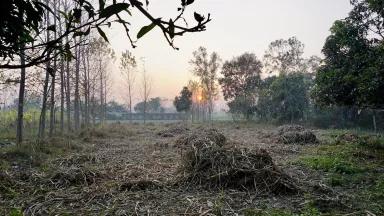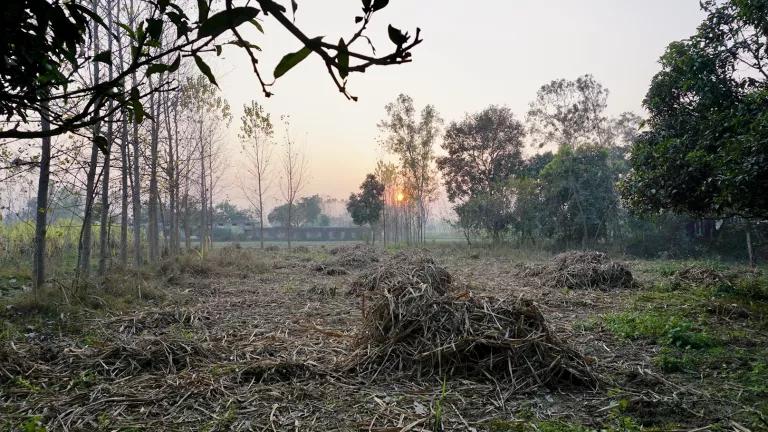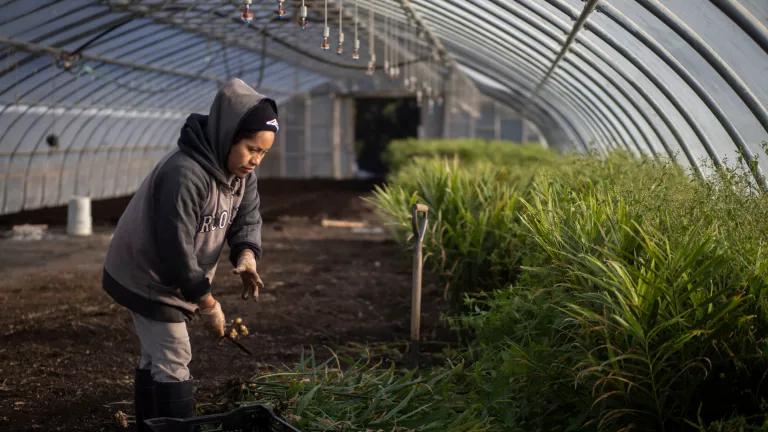Regenerative Agriculture Part 4: The Benefits
The regenerative agriculture movement is reviving an Indigenous approach to agriculture and flipping the narrative to show how agriculture can help restore ecologies, fight climate change, rebuild relationships, spark economic development, and bring people—consumers AND farmers and ranchers—joy.
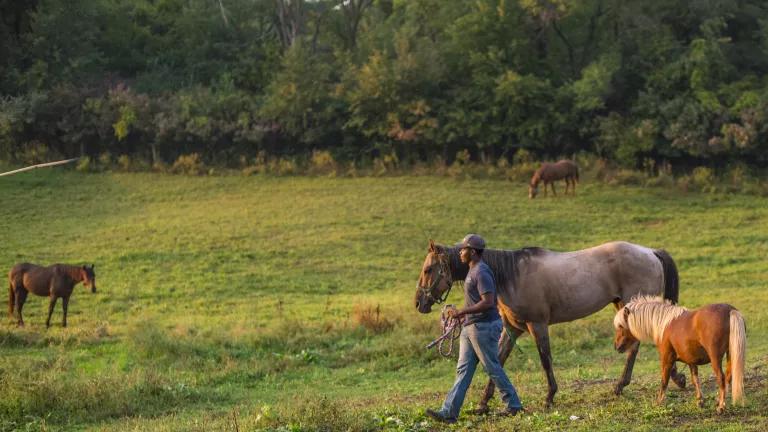
Living with his uncle in Runnels, Iowa, D’Quinton Robertson raises horses, chickens and a sheep. He participates in rodeo competitions and is involved with racing horses.
This is the last installment of our regenerative agriculture blog series. The first blog introduced the philosophy of regenerative agriculture, the second blog covered its principles, the third blog delved into regenerative practices, and this one describes the benefits of regenerative agriculture.
Valentine’s Day seems like a fitting time to talk about the benefits of regenerative agriculture. The love, care, and creativity our interviewees showcase every day and their commitment to regenerative philosophies, principles and practices yielded a breadth of benefits on and off the land. Some had just started their relationships with regenerative agriculture and others were decades in. Some were switching one practice at a time and others dove into the deep end and transformed their entire landscape at once. The regenerative agriculture movement is reviving an Indigenous approach to agriculture and flipping the narrative to show how agriculture can help restore ecologies, fight climate change, rebuild relationships, spark economic development, and bring people—consumers AND farmers and ranchers—joy.
Ecological Benefits
Our interviewees witnessed amazing transformations on their land, sometimes rapidly, within one season after they took their first steps on the regenerative journey. They saw improvements in soil health and fertility, evidenced by healthier crops and improved yields. Farmers and ranchers noticed more moisture and sponginess in their soil, as well as chocolate-colored soil aggregates sticking to the long roots of their plants. Soil tests and visual signs like earthworms revealed vibrant microbial communities in the soil, the foundation of healthy water, nutrient, and carbon cycling. Biodiversity on land, air, and water followed improved biodiversity in the soil. We heard incredible stories of a rise in bird, bee, and insect populations, as well as richer and more diverse plant life returning to the farm and ranch – all signs of ecosystems returning to health.
Regenerative farming also benefits water quality and quantity. Less chemical and pesticide inputs on regenerative farms and ranches means less chemical pollution impacting ground and surface water, and in turn, a reduction in harmful algal blooms and drinking water pollution. Improved water efficiency from better soil health leads to better soil water holding capacity and groundwater recharge, as well as more water conserved on the farm or ranch and more resilience to withstand flood and drought.
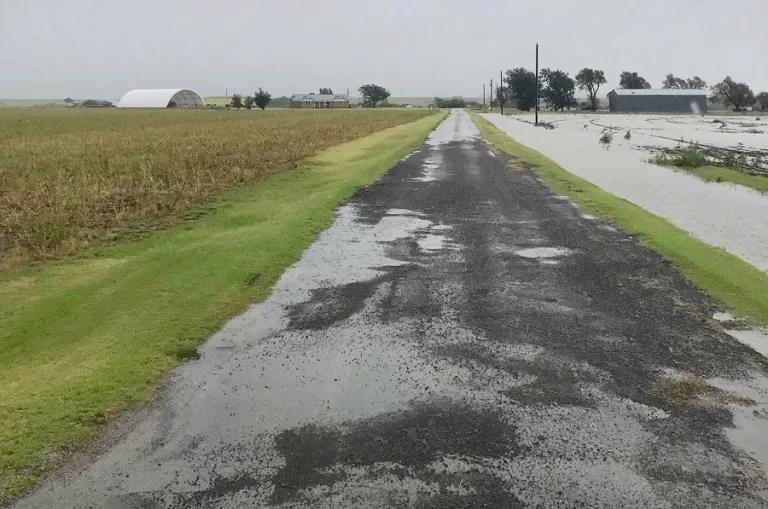
Two fields after the 2019 flooding: The field on the left had been farmed for several years using cover crops and no-till practices. The field on the right, with standing water, had been farmed with conventional tillage and no cover crops.
Many of the farmers and ranchers we spoke with were motivated to make the regenerative journey or become first-time farmers or ranchers because they want to be part of the solution for climate change. With the power of photosynthesis and help from our mighty microbes, our soil is Earth's greatest carbon sink and with proper coaxing can draw down 250 million metric tons of carbon dioxide-equivalent greenhouse gasses in the US annually, reversing the impacts of climate change. Furthermore, regenerative agriculture is a path toward climate resiliency and adaptation. As flood, drought, and other extreme weather patterns become more frequent, farmers and ranchers are prepping their land to weather the impacts of climate change. By being better stewards of the land, they are able to absorb more water during a flood, maintain water security during a drought, and prevent wildfires by grazing livestock to control brush.
Economic Benefits
While most of our interviewees were motivated by ecological, community, and personal values, economic benefits of regenerative agriculture were also a major motivator and outcome for many. Due partially to improved soil health, our interviewees found that the overall health and yields of their crops improved as a consequence of their regenerative farming techniques. Cost-savings from reduced use of chemicals, including fertilizers, herbicides and pesticides, and antibiotics, had a positive impact on farm and ranch profitability.
In our practices blog, we wrote that regenerative farmers and ranchers shared some financial values and practices. For many if not most of our interviewees, the outcome of their careful financial practices was reduced debt and risk, and overall benefits for financial security and bottom line. We don’t want to give the impression that all of our interviewees found it easy to be successful; on the contrary, farming is a difficult profession, even for regenerative farmers and many of our interviewees shared their struggles to break even. It’s important to note that financial success often came easier when farmers had access to land and resources inherited or granted from family and friends, and that is a problem when historic racial and gender inequities contributed to unequal access to wealth and land ownership. Good old-fashioned luck and good fortune of circumstances also had an impact on a farmer’s success. Even so, after speaking with so many individuals from many different backgrounds and farm types across the country, we think it’s fair to say that regenerative agricultural values and practices have economic benefits.
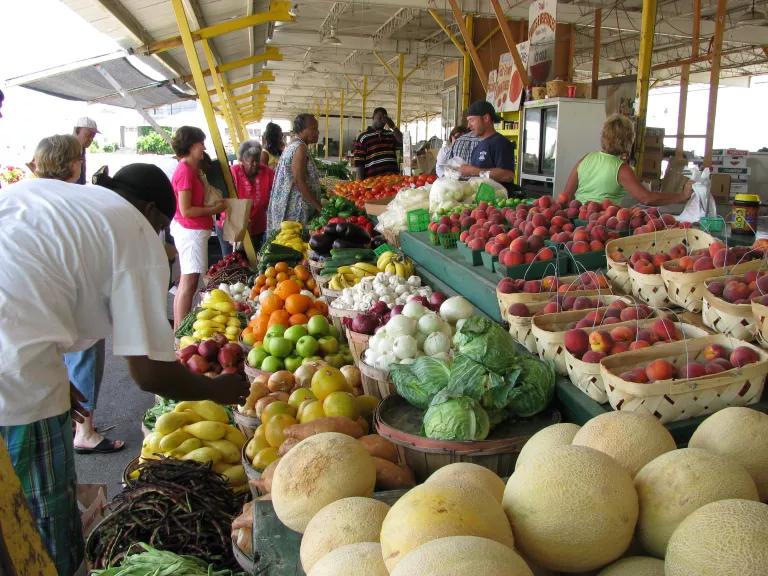
Farmers Market in Jackson, Mississippi
On the macro-level, regenerative agriculture has the power to drive rural economic development. There is a concept of regenerative economies that goes beyond the farm and includes the larger food supply web. The idea of regenerative agriculture is to generate life and wealth across the connective tissues of processing, infrastructure, distribution, and supply of food. We are still learners, but we heard so many exciting things from producers who were entering this web by investing in processing facilities, value-added products, and even starting their own food purchasing companies, all to give producers more power in the web and to ensure that producers get a greater share of every dollar of food sold. It isn’t easy and there are a lot of things in our agricultural economy that will have to change for farmers to reap a just reward for their labors, but regenerative farmers and ranchers seem to be on the right path to make that happen.
Community Benefits
Stronger relationships with their customers and a community of other growers were just a handful of the community-oriented benefits our interviewees mentioned. Many shared stories about how they often asked neighbors for help to repair broken infrastructure or equipment, called fellow farmers for aid during emergency wildfires or floods, or called a mentor with questions about a specific practice. The growing supportive networks of regenerative farmers and ranchers offered new and more experienced growers to exchange information, learn from one another, and build community, sometimes in the form of cooperatives that help smaller farmers and ranchers aggregate their market power and get a greater share of the profits from their sales.
Hosting on-farm/on-ranch visits helped farmers and ranchers build stronger relationships with, families, kids, and other customers, and in turn, those visitors learned about regenerative agriculture. Kids were encouraged to share their observations about how the farm or ranch changed since their last visit, helping them feel like they were a part of the system. And the children of farmers and ranchers who grew up seeing their parents struggle with the farm found renewed interest in agriculture once their parents transitioned to more regenerative mindsets. Some even came back to keep the family business going!
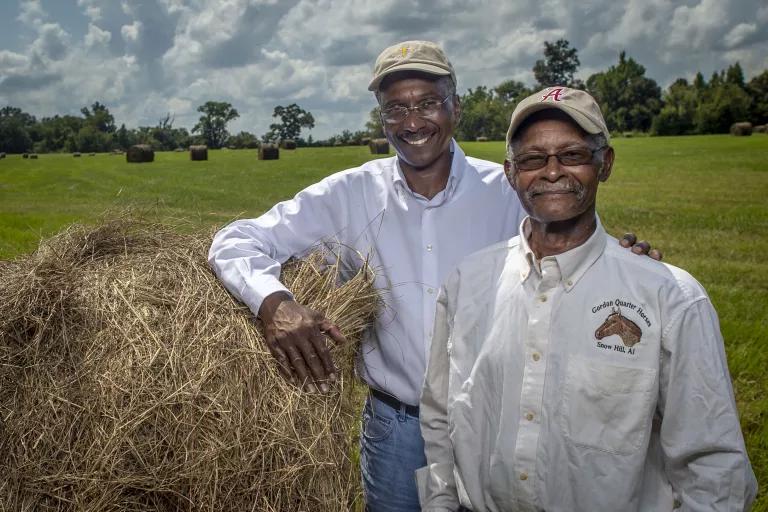
Nivory Gordon, Jr. and his father Nivory Gordon Sr. talk about their careers in agriculture. Nivory Sr. has been farming his whole life. Nivory Jr. pursued a career in Agriculture that allows him to help others and provide a good environment for a family.
Overall, cultivating a new generation of farmers and ranchers, growing existing networks of farmers and ranchers, and inspiring children to come back to the family business all point to a movement that is investing in a stronger rural workforce and reinvigorating local economies.
Mental & Physical Health Benefits
On a deeply personal note, our interviewees shared just how much regenerative agriculture brought them joy and happiness. They told us they have more free time from working with nature instead of against her. The interviewees who transitioned from industrial to regenerative agriculture shared how much they enjoy farming and ranching again. They were happier seeing earthworms return to their soil and birds flock back onto the land. They felt healthier and liberated after breaking ties with the chemical industry, something that farmworkers also benefit from.
The diversified revenue streams afforded by regenerative agriculture (e.g. meat from livestock and eggs from chickens, fruits and vegetables from diverse crop rotations, honey from bees, and teas made from herbs) provided financial security. Our interviewees admitted that diversifying their enterprises added work, but the tradeoff of not worrying about an entire income dependent on one or two crops was largely worth it. Regenerative growers also spoke about the dignity they felt in growing food for the community—they were proud knowing they’re doing their part to grow healthy food for future generations while protecting the longevity of the soil.
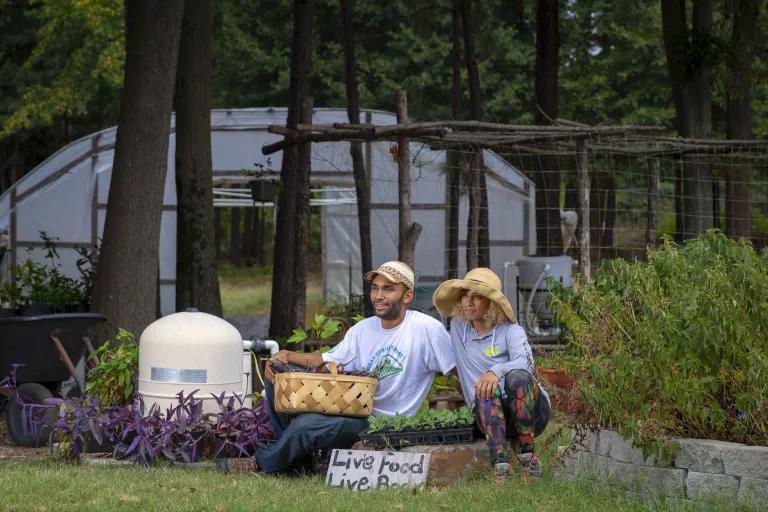
Urban Sprout Farms, a biodynamic, certified organic urban farm Lakewood Heights, Georgia. With federal help, Urban Sprout Farms addresses resource concerns of the land and fills the education gap of the farm and the community.
Climate change is an intersectional challenge and regenerative agriculture gives growers, communities, advocates, and legislators the chance to simultaneously repair, restore, and rebuild. The multifaced benefits of regenerative agriculture are what drive our team to advocate for policies that remove the barriers to and provide opportunities for scaling up regenerative agriculture. Thankfully, our interviewees’ experiences show us what policies are needed, and we look forward to working alongside partners across the nation to transition to more regenerative systems and support the enabling environments that contribute to their success. Policy can transform food systems into ones that are more equitable and just, and we commit to promoting policy that breaks down barriers to full participation in agriculture, especially for farmers and ranchers who have been historically disenfranchised.
Reconnecting people and the landscape is as essential as reestablishing proper hydrology or cleaning up contaminants. It is medicine for the earth.
—Dr. Robin Wall Kimmerer, Braiding Sweetgrass
Our team’s regenerative journey gives us a renewed sense of hope. Turns out, regenerative agriculture is more than medicine for the earth, it is also medicine for us.



